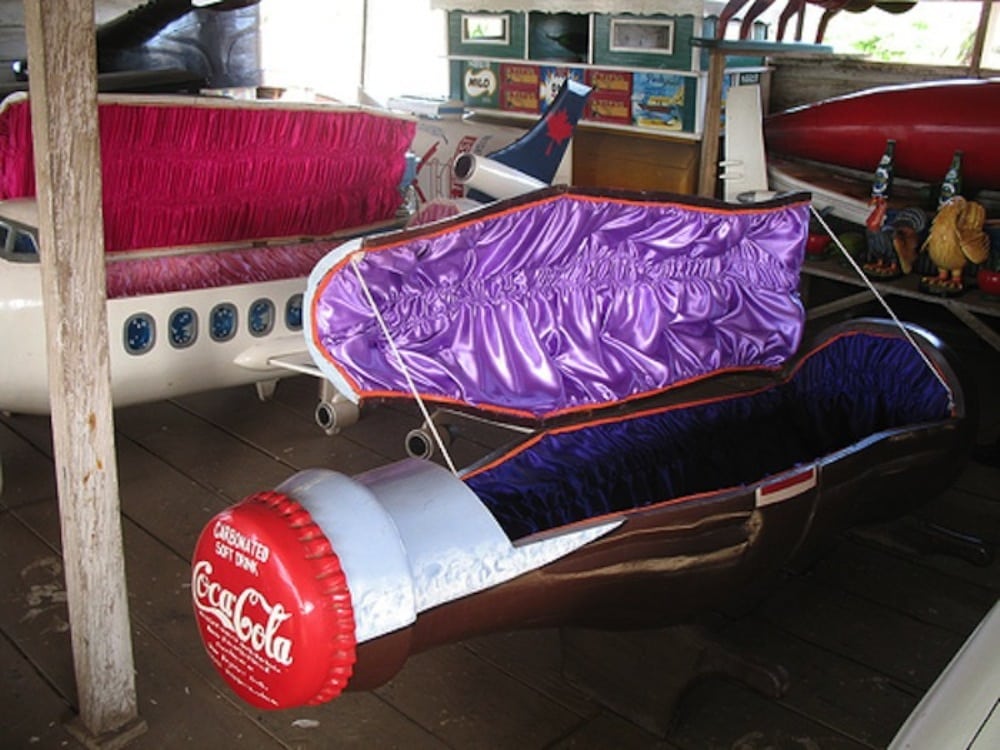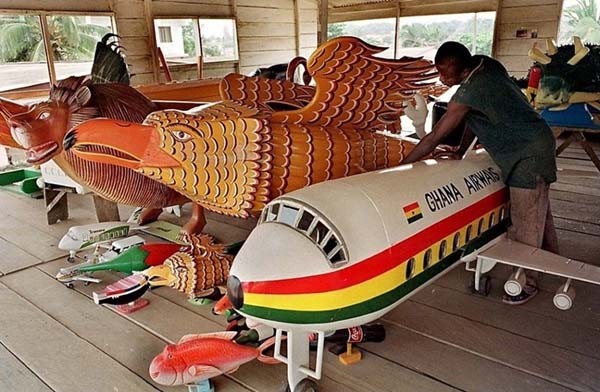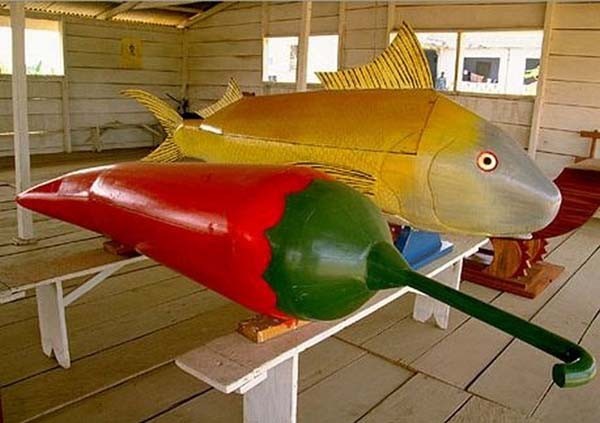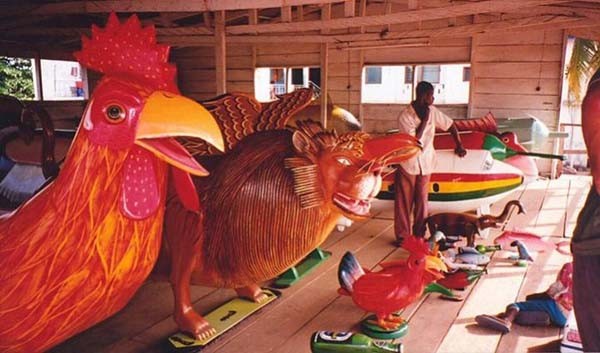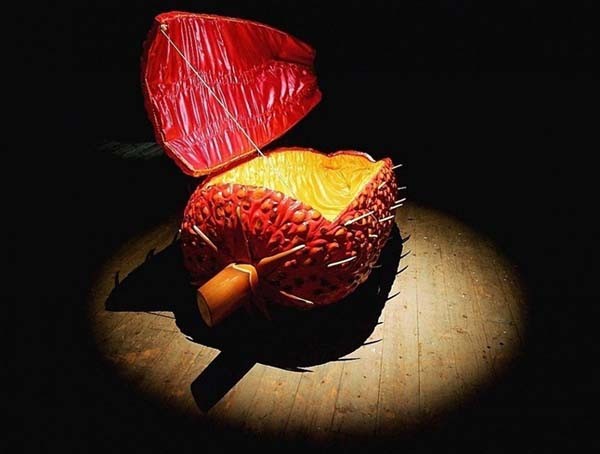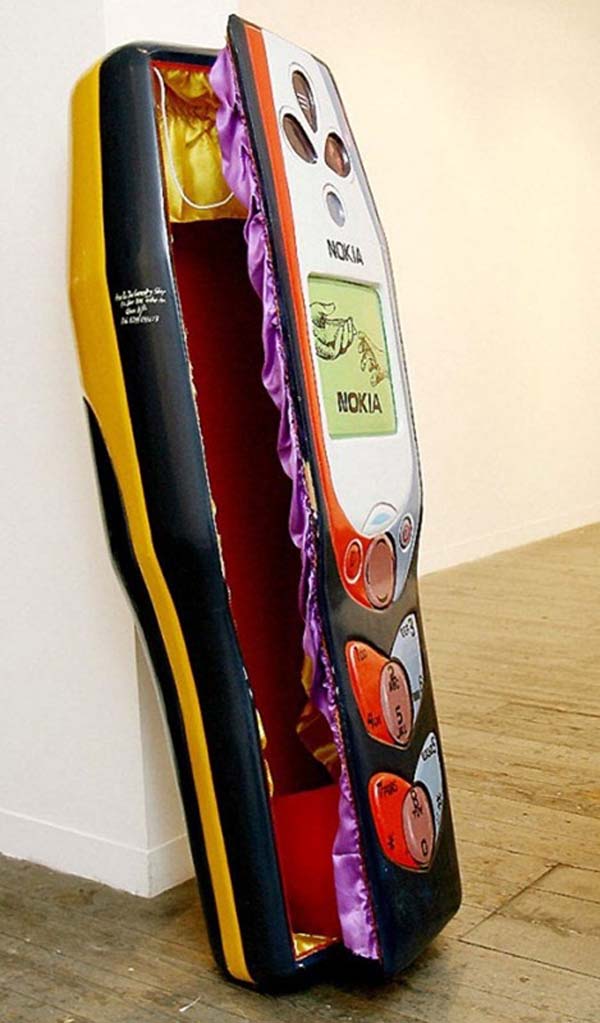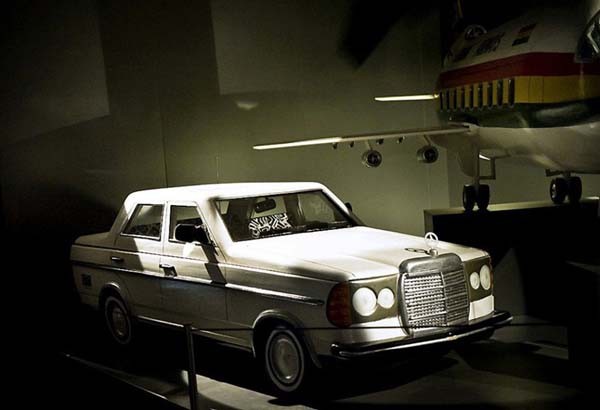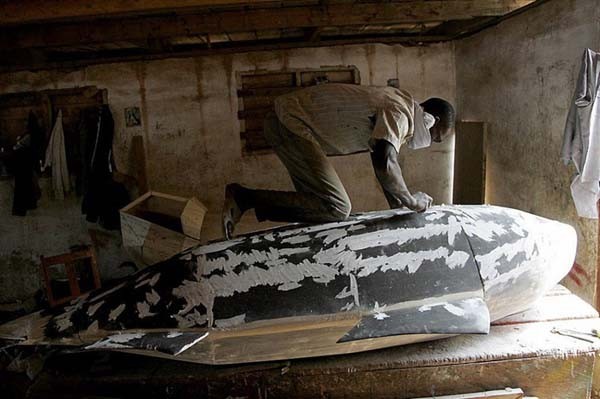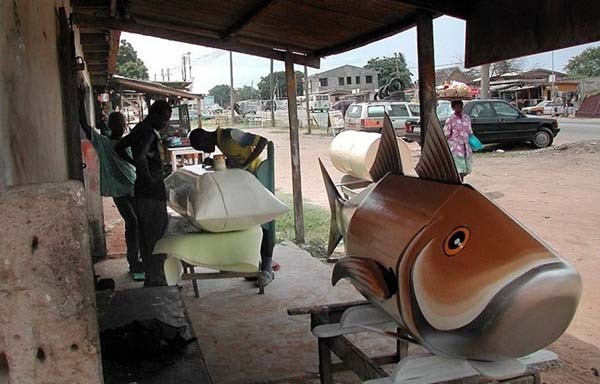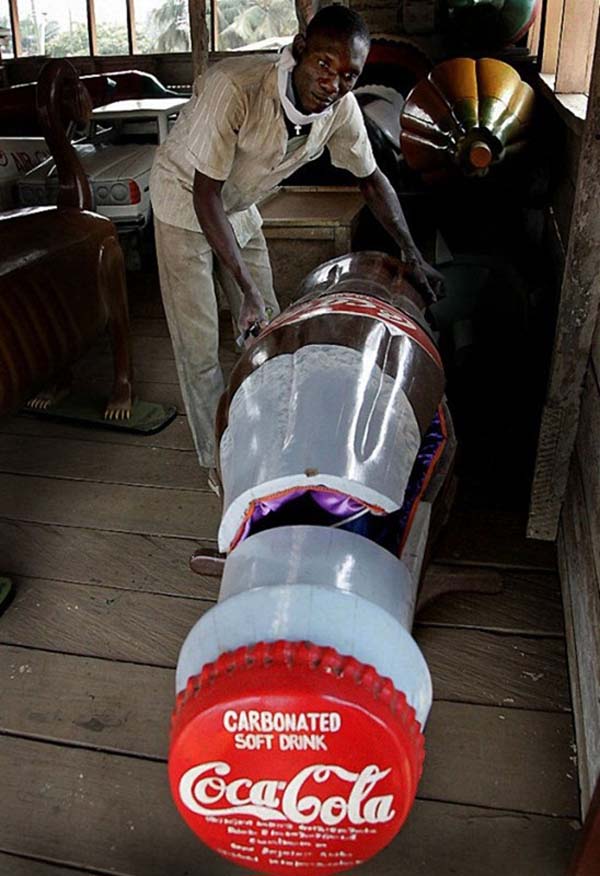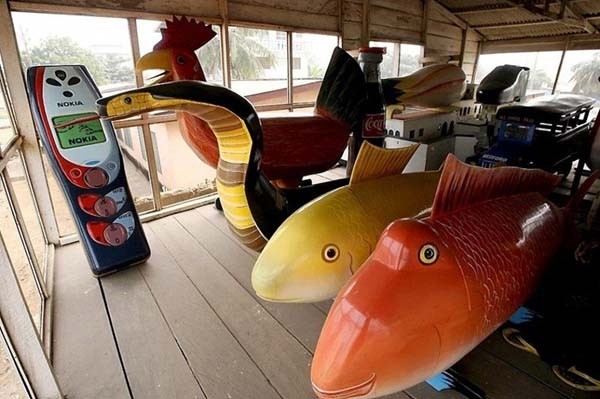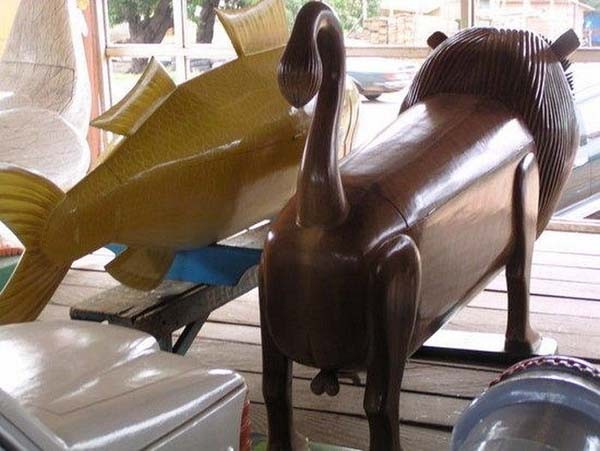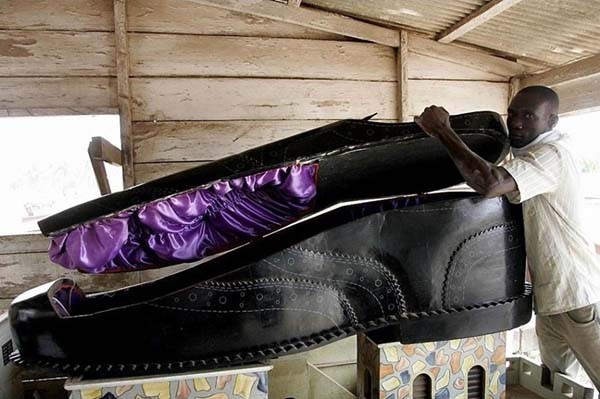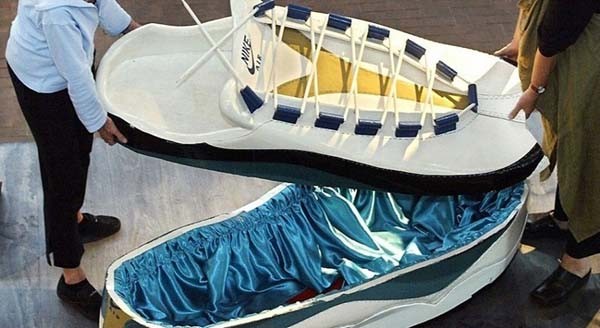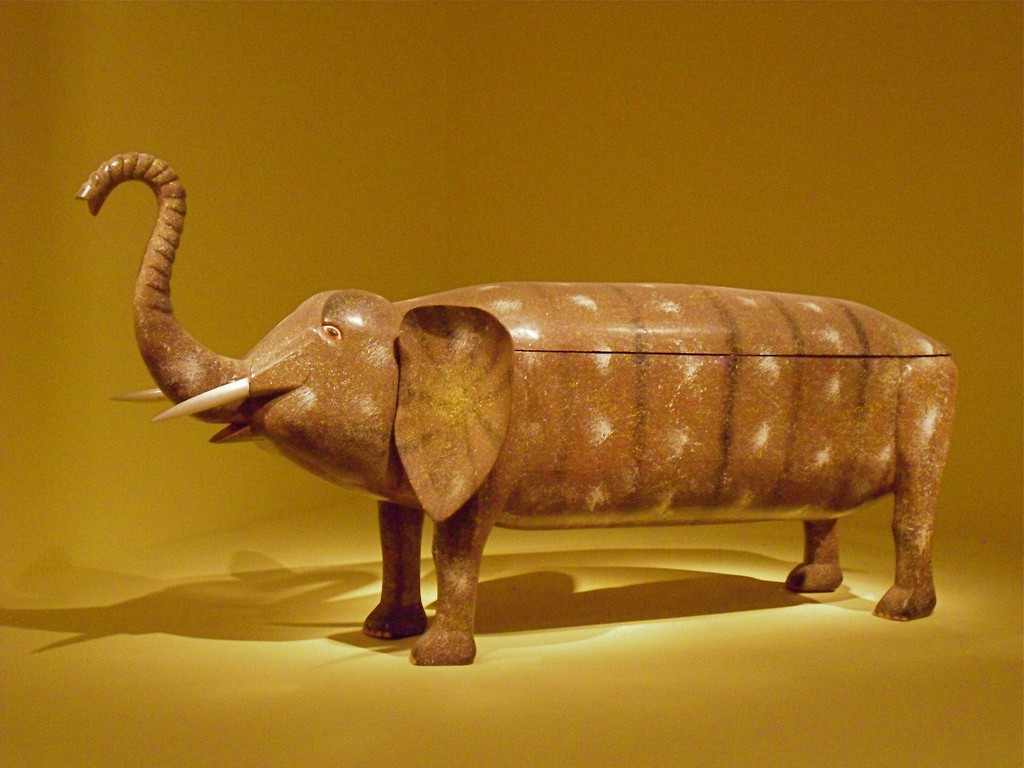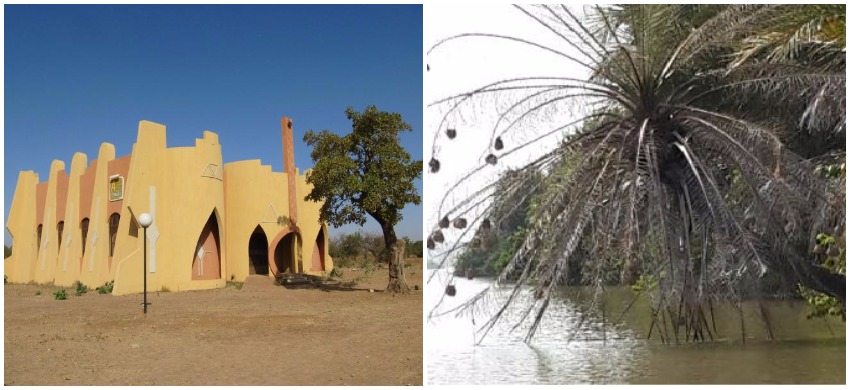The colorful coffins, which are also called the figurative or fantasy coffins, are designed to represent an aspect of the dead person’s life, his career, aspirations, personality, or achievements — such as an airplane if they were a pilot, a fish if their livelihood was the sea, a sewing machine for a seamstress, a pen for a writer or teacher and many more. They might also symbolize a vice — such as a bottle of beer or a cigarette. I bet you’ve never seen anything like this before The fantasy coffins are usually made by specialized carpenters in the Greater Accra Region and are developed not only out of the figurative palanquins but are also considered real works of art. Also known as ‘boxes of proverbs’ or Abebuu Adekai or ‘okadi adekai’ (in the Ga language), these objects come in different sizes, shapes, and designs, such that they include fruits, vegetables, animals, and many other items. Cost-wise, local coffins are sold for $500 and above while coffins that are for export cost around $3,000. The type of wood and the number of hours a carpenter put in determines the cost of a coffin. An ordinary coffin for funerals is built with light wood such as emien or wawa wawa (white wood) while those for export are built with mahogany or limba, which are harder and more expensive. A typical fantasy coffin takes about 3 months to construct but in a case of an unexpected death, it may take two or three weeks for it to be completed. The construction of the coffins is done without the aid of electrical appliances but with the use of simple tools.
Other Facts You Need To Know
- The fantasy coffins were exhibited for the first time to a wider Western Public in 1989 at the Musée National d’Art Moderne in Paris during the Les Magiciens de la Terre art exhibition. The fantasy coffins have also debuted at exhibitions in Spain, Belgium, at the Grande Halle in Paris, in the Centre Georges Pompidou and at the New Museum of Modern Art in New York.
- The seven coffins that were showcased at the international art exhibition were constructed by renowned Ghanaian sculptor Kane Kwei (1922–1992) and his former assistant, Paa Joe.
- The Ga people were the first set of Ghanaians to construct and make use of the fantasy coffins.
- Notable carpenters in the business include Kane Kwei, Kudjoe Affutu, Eric Adjetey Anang (Kane Kwei’s grandson), Eric Kpakpo, Ataa Oko, and Daniel Mensah.
- In the whole of Ga, there are about 10 shops that carve the fantasy coffins. Most of them are situated in Teshie while the rest are found in other areas. Of these workshops, Kane Kwei’s coffin workshop is widely known and also considered as the birthplace of the product. 6. People are only allowed to catch a glimpse of fantasy coffins on the day of the burial when they are buried with the deceased.
Check Out These Fantasy Colorful Coffins
Ghana Web It’s not so common to come across a fish or chili coffin… Ghana Web I bet you ain’t seeing anything like this before Ghana Web Completely Unique, Completely Different Ghana Web The Deceased must have been a phone freak or something… Ghana Web The coffins can cost up to $400. Ghana Web Although it’ll eventually go into the ground, these colorful coffins are built with extensive care Ghana Web Now, this is very Unique… Ghana Web Either they liked it so much, perhaps what killed them… who knows? Ghana Web This tradition has become so popular that Ghana is littered with coffin vendors. Ghana Web Shaped like a Lion or Tiger Ghana Web Yesss! You got it right, it’s actually a big shoe… Ghana Web Perhaps for a sports person… Ghana Web
